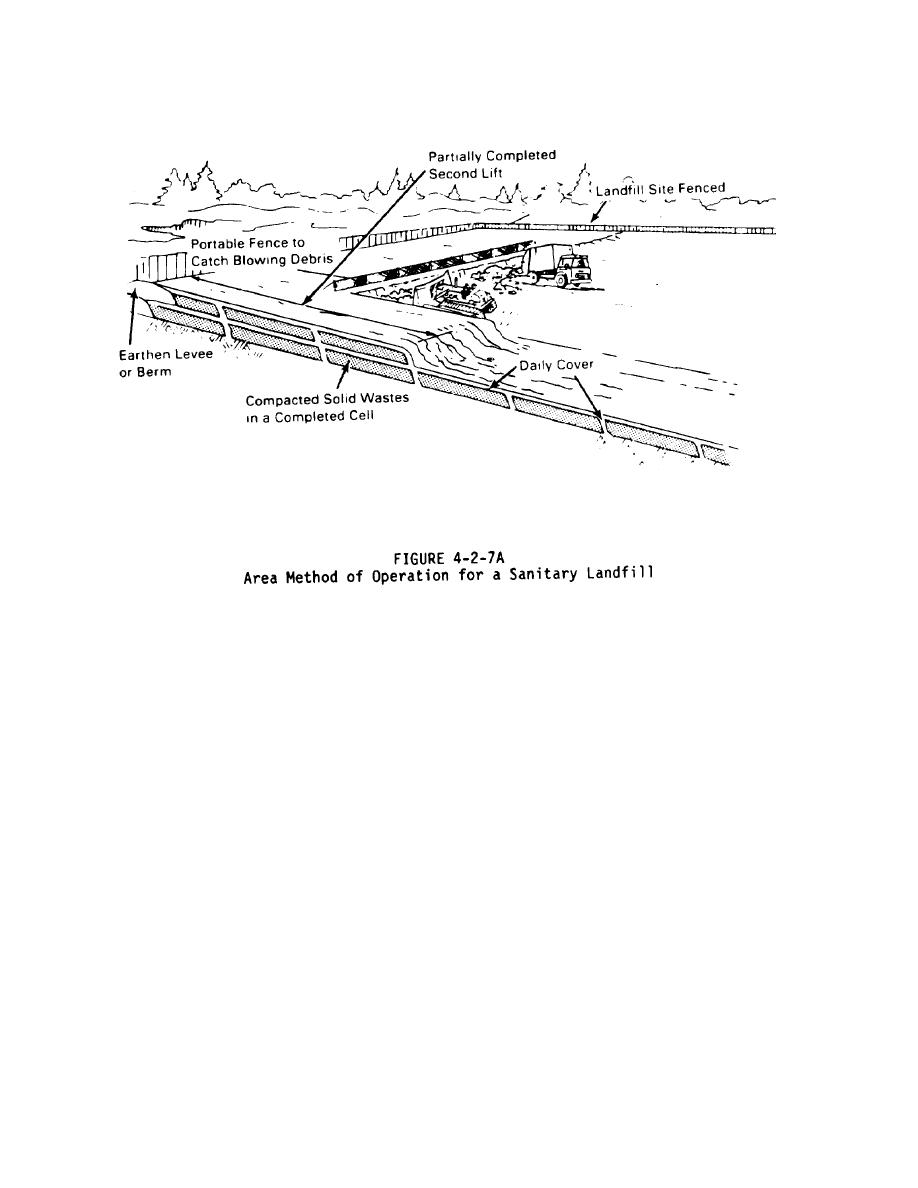

Custom Search
|
|

|
||
 embankment behind the first trench. Wastes are then placed in the trench,
spread into thin layers (usually 18 to 24 in.), and compacted. The operation
continues until the desired height is reached. The length of trench used each
day shall be such that the final height of fill is reached at the end of each
day's operation. The length also shall be sufficient to avoid costly delays
for collection vehicles waiting to unload. Cover material is obtained by
excavating an adjacent trench or continuing the trench that is being filled.
The trench method, however, is not readily amenable to the proposed require-
ments for installation of liners and leachate collection and treatment
systems.
4.2.7.7 Depression Method. At locations where natural or
artificial depressions exist, it is often possible to use them effectively for
landfilling operations. Canyons, ravines, dry borrow pits, and quarries have
all been used for this purpose. The techniques to place and compact solid
wastes in depression landfills vary with the geometry of the site, the
characteristics of the cover material, the hydrology and geology of the site,
and the access to the site.
4-54
|
 |
|
 |
||